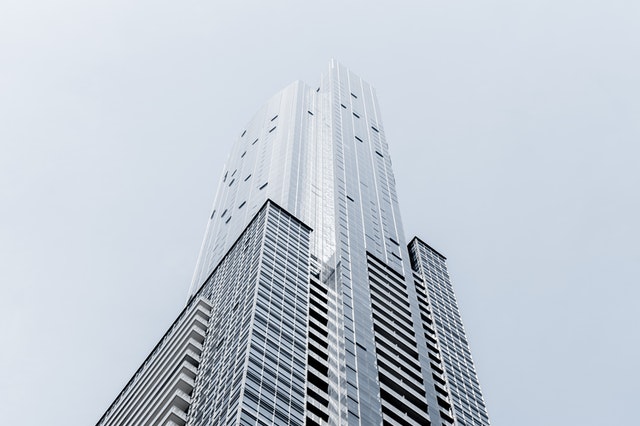It is true that any property type, regardless of whether it is residential or commercial, presents a good opportunity for investments. Recent debates have shown that the real estate investing decision on which between commercial and residential is better to invest a hot button issue.
Proponents of residential investment argue that residential premises are less risky and manageable choice, while those for commercial investment say commercial premises are safer regarding guaranteeing more financial rewards.
Wise investors keenly look at their bad and good sides before they make their decision. Are you one of them?
So, if you intend to go for the commercial investing option, let’s take a look at a couple of the advantages and disadvantages of investing in various commercial properties.

Upside of a commercial property investment
These are some of the pros that can influence an investor to acquire a commercial property:
- Higher income returns generated: the lucrative nature of commercial properties draws people in investing in such investments. The earning potential for this type of real estate through rent collection from occupants is huge. While residential properties which are allocated in the capital cities of Australia may give a return of 3.6 %, commercial properties as CoreLogic RP survey suggests may earn investors a rental yield that ranges between 8%- 12%. It is evident that commercial properties earn more than residential ones.
- It involves longer leases: commercial properties entail a longer tenancy leases compared to the residential properties. A residential tenancy can allow residential premise tenants to for a period that is ranging anywhere from 6 to 12 months. On the other hand, tenants occupying a commercial property have a longer lease period advantage of between 3 to 10 years. A longer tenancy ensures a more consistent income flow as it keeps costs lower a bit lower than a short tenancy.
- No rates and outgoing payments required: For residential property, owners or landlords will be required to pay necessary rates and other outgoings to local authorities in the vicinity such as utility firms and councils. The good thing with commercial properties is that this kind of liability is transferred to the tenants occupying such premises.
- Deposits are usually lower: For an individual to acquire a commercial lease, the individual will require lower deposits than residential buildings. Let’s take an illustration, where a bedsitter can cost as much as $400,000 whereas a carpark could cost $80,000, which is a little amount when space is almost the same.
- Price evaluations are more objective: Evaluation of commercial property prices is usually easy. A prospective investor will just inquire the current property owner for the income statement attached to that property to be able to estimate its valuation. In case the is a knowledgeable broker around to advise the property seller, the prevailing cap rate for the property will be utilized to gauge what an investor can get from a particular commercial property, whether it is an office, retail or industrial property. However, more of emotional pricing is used when it comes to residential property valuations.
Some of the downside of a commercial property investment
While the positive reasons may make a commercial property to appear attractive in comparison to a residential property, a smart investor should not overlook some of the negative issues like this ones:
- Sensitive to various economic conditions: demand for commercial properties will usually be high when the economy is thriving due to a lot of business activities making investors in such properties to rake good fortunes. On the other hand, demand for available commercial premises will decline within a short period when there is an economic downturn. It is a converse scenario from residential properties where economic conditions impact the properties less.
- Getting a tenant to occupy the property takes longer: while commercial tenants take advantage of the longer leases to occupy the property compared to the residential ones, searching for a new tenant to replace the former one takes a longer time. The longer vacancies in commercial properties give the property owner the burden of footing the rates and outgoing costs that the previous tenant covered. Additionally, the longer the premises stays unoccupied, the heavier will the owner feels the effects.
- Changes in supply easily affect the properties: potential problems for investors tend to emanate when there are changes in the supply conditions. Existing tenancies tend to be threatened when new properties upsurge in an area since many tenants will be enticed to expand or upgrade. A high supply also dwindles the negotiation ability for potential yields.
- Infrastructural changes may present detrimental effects: whereas commercial investments tend to benefit from major infrastructural changes, it also pushes away tenants from the existing older commercial premises. Some properties will be rendered vacant when tenants move from those properties to occupy new properties. Such movement of tenants disrupts businesses and income flow gained from commercial properties.
- Their value tends to dwindle sharply: Usually there is a correlation that exists between the value and lease of a particular commercial property. When a commercial property’s lease nears expiry, or it becomes vacant, tend to decline and be lower than the one which is occupied. In residential properties, price fall occurs gradually over a long period which eliminates such dramatic issues.
- The cost of repair and cleaning is usually high: whenever a tenant moves out of the property, it is usually left in a deplorable state. The landlord of such property will try to clean that place and do some repair to make the premise attractive to new tenants. Even more discouraging is the fact that landlords will have to spend a lot of time dealing with necessary wears and tears of commercial properties in comparison to residential properties. A trend is also emerging where landlords will hire regular cleaning services to maintain the commercial properties in an attractive state.
- It needs a professional assistance: the commercial property owner needs to be licensed to handle maintenance issue properly personally. In most cases, many investors are not prepared to undertake most maintenance issue, so they usually hire people to do the repairs. Such expenses for hiring a professional assistance is usually an added cost for the commercial property care budget. When there is lease administration included in the expenses, property management companies can levy between 5-10% out of the rent revenues to cover the expenses.
- The initial investment is bigger for commercial investments: In a given area, an investor will require more capital for commercial premises than for residential properties. Apart from the upfront costs, large capital expenditures will come afterward. When the commercial property has more facilities, the costs to maintain the property become even higher. For an investor to support the commercial property fully, the revenue should outweigh the costs. Thus, more revenue will be needed for a commercial property than residential one to bit the costs.
Checking at the both the advantages and disadvantages of investing in commercial properties, a wise investor will have to weigh out whether to go for the commercial investment only or to diversify to other property types in the portfolio. Overall, a commercial property investment will be a good investment option, but an investor has to make due diligence to understand the prevailing risks for such investments.


